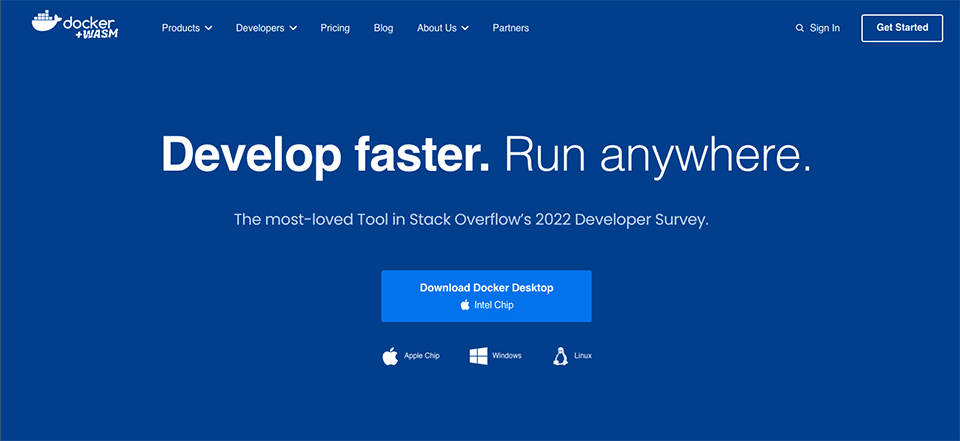DevOps teams are under more and more pressure to provide clients with greater features rapidly. Through scalable platforms with great CLI and API interaction, cloud providers provide solutions. Sadly, there is a chance that the APIs that cloud providers offer are incompatible. However, a few cloud-native technologies assist DevOps teams in creating unique solutions for any cloud provider.
Rogue and Docker are two examples of these tools. Getting the most out of your cloud environment requires a thorough understanding of what each one does and how they interact.
Virtual machine (VM) environments may be created and managed using Vagrant in a single process. Vagrant offers a uniform configuration format, a single CLI, and common provisioning for installing software and updating configurations whether you’re creating a local VM to operate with a hypervisor or merely a cloud VM.
The ability to bundle software and support settings into images that operate continuously across several platforms is provided by Docker. Docker gives DevOps teams the assurance that software will function just as well on a personal computer as it would on a controlled cloud environment.
Despite having the same objective of building repeatable environments, Vagrant and Docker approach this task in distinct but complementary ways. The aims of Vagrant and Docker are examined in this article.
What is Docker?
the postal employee is a free and open platform for creating, distributing, and executing software. In order to create a self-contained artifact known as an image, DevOps teams can bundle bespoke software, supporting applications, libraries, instructions for networking, file mounts, health checks, and start scripts.
The photos are then run in a container, which is a compact, isolated environment. Containers are far more flexible than virtual machines (VMs), which generally reserve a fixed amount of memory and severely restrict CPU consumption. They just use the memory and CPU that they require.
As a result, numerous containers may operate concurrently and effectively, cutting costs and expanding scalability. Containers are not the best option for executing untrusted programs since they are not seen to be as safe as virtual machines (VMs).

Why use Docker (vs Vagrant)?
Cloud-native apps that are either integrated with message queues or function as a function that reacts to cloud-based triggers and events are generally delivered and run by DevOps teams using Docker. A platform that is hosted as a service (FaaS).
Because Docker is the foundation of many platforms, including Kubernetes, containers may be deployed widely. Additionally, all cloud service providers enable the use of Docker containers in their Platform as a Service (PaaS) solutions. A PaaS that doesn’t support Docker is uncommon.
All of the well-known cloud-native products provide Docker images on which to embed their CLI, demonstrating that Docker can also distribute and run CLI-based functionality.
What are the benefits of Docker?
By addressing the issue that bespoke programs might provide different outcomes when executed on a developer’s desktop workstation and in a production environment, Docker addresses a prevalent issue with traditional software distribution procedures. These discrepancies are frequently the consequence of developers using different versions of programming languages, different web server setups, or whole different operating systems than what is used in the production environment. These discrepancies cause support issues, such as “it works on my machine,” to be sent back and forth between teams.
Images executed in containers produce more consistent results regardless of the location since Docker images contain the code for all supported apps, custom applications, and libraries.
DevOps teams can swiftly exchange images among themselves and deploy images utilizing various hosting platforms thanks to the ease with which Docker images can be distributed through registries like Docker Hub. For instance, Docker powers Kin sta’s DevKinsta WordPress development toolkit.
When deploying more complicated application stacks, such as a group of connected microservices or a database with a backend application, Docker Compose gives users the option to create and link numerous Docker containers with a single command. One YAML file contains definitions for all containers, related parameters, and networking configurations. After reading this file, Docker Compose builds and oversees several containers together.
What is a Vagrant?
For dividing and provisioning computer resources, virtual machines (VMs) have long been demonstrated to be a dependable and safe alternative. The most common service offered by cloud providers is virtual machines (VMs), and organizations seeking to host VMs locally can choose from a wide range of commercial and open-source alternatives.
For DevOps teams, this variability presents a difficulty. Maintaining consistency across on-premises and cloud-based environments is challenging due to different CLIs and APIs for VM creation and management.
Vagrant addresses inconsistencies across VM platforms by providing a unified CLI and standardized configuration language. DevOps teams can use Vagrant to seamlessly create and manage virtual machines, ensuring consistency whether working on-premises or in the cloud. Vagrant may replace MAMP (for macOS, Apache, MySQL/MariaDB, PHP, Perl, or Python) and has many more uses as well.

Why use Vagrant (vs Docker)?
Manually installing software and customizing configuration files to launch a virtual machine is inefficient. This process is not easily repeatable, requiring manual VM creation for different OS systems and providers. Additionally, it makes it virtually hard to determine how the VM was set up in the future.
Automating the procedure needed to configure a virtual machine is a better practice. Vagrant is a tool to automate the creation of virtual machines (VMs) for various providers. Additionally, Vagrant provides a huge variety of excellent VMs and stray clouds. which DevOps teams may utilize to launch their own VMs.
What are the benefits of Vagrant?
DevOps teams using Vagrant have access to the same learning resources, whether creating virtual machines for on-premises or cloud platforms. You can easily modify Vagrant configuration files, replay them, and review how the VM was created for better understanding.
DevOps teams may move between cloud providers or clouds using Vagrant without needing to change how VMs are created.
Vagrant-created virtual machines offer high isolation, often utilizing the advanced virtualization features of modern CPUs. This makes VMs and tools like Vagrant ideal when security and isolation are crucial.
Numerous Linux distributions, including Fedora and Ubuntu, also offer official Vagrant boxes that DevOps teams may use for development. As a result, creating a custom VM takes less time.
Vagrant vs Docker: A Closer Look
Vagrant and Docker both increase the productivity of DevOps teams by automating the development, deployment, and use of the software.
Docker does this by using containers as a lightweight execution environment and a special packing format called images. Containers operate consistently across platforms, boosting the confidence of DevOps teams that their program performs as intended. PaaS and FaaS platforms provide strong support for Docker, enabling DevOps teams to choose the right cloud platform for their needs.
Many containers can coexist on the same host, sharing a common pool of resources. While they are mostly isolated, they are not entirely separate from one another. This setup allows containers to scale effectively.
Vagrant does this by offering a reliable method for creating VMs using already-existing providers. Teams that have already invested in virtual machines and rely on their high levels of isolation, security, control, and customization are the best candidates for it.
The greatest option for executing dependable programs while lowering processing expenses is Docker. The containers have extremely minimal overhead and are well insulated from one another. This implies that many containers may operate concurrently on a single OS.
Both Vagrant and Docker may be used simultaneously since they are not mutually exclusive technologies. DevOps teams can use Vagrant to replicate a specific environment, making it easier to reproduce issues. Additionally, Docker can be used within a Vagrant-generated VM to develop and execute apps. This setup allows for testing new Docker versions or software provided as Docker images in a controlled environment.
Summary
When it comes to creating, distributing, and executing apps, DevOps teams have a wide range of alternatives.
PaaS and FaaS platforms adopt Docker for its unique image format and container execution environment, allowing for efficient and scalable resource utilization.
Vagrant minimizes discrepancies by offering a unified CLI and standard configuration syntax for creating VMs across different providers. It allows VMs to provide secure and isolated environments, compatible with various cloud and on-premises VM providers.
Before starting your next project, explore how Kinsta’s application hosting service can leverage Dockerfiles to manage the deployment of your code. This approach ensures a streamlined, consistent environment for your application, simplifying the deployment process and enhancing scalability.
I am an experienced writer and technology enthusiast contributing to Hostao Blogs. With a degree in Computer Science and a background in web hosting, I simplify complex tech topics for all readers. My articles cover web development, cybersecurity, and emerging digital trends. I'm dedicated to making technical subjects accessible and providing valuable insights. Beyond writing, I'm an avid tech explorer and outdoor enthusiast, always at the forefront of digital advancements.
























